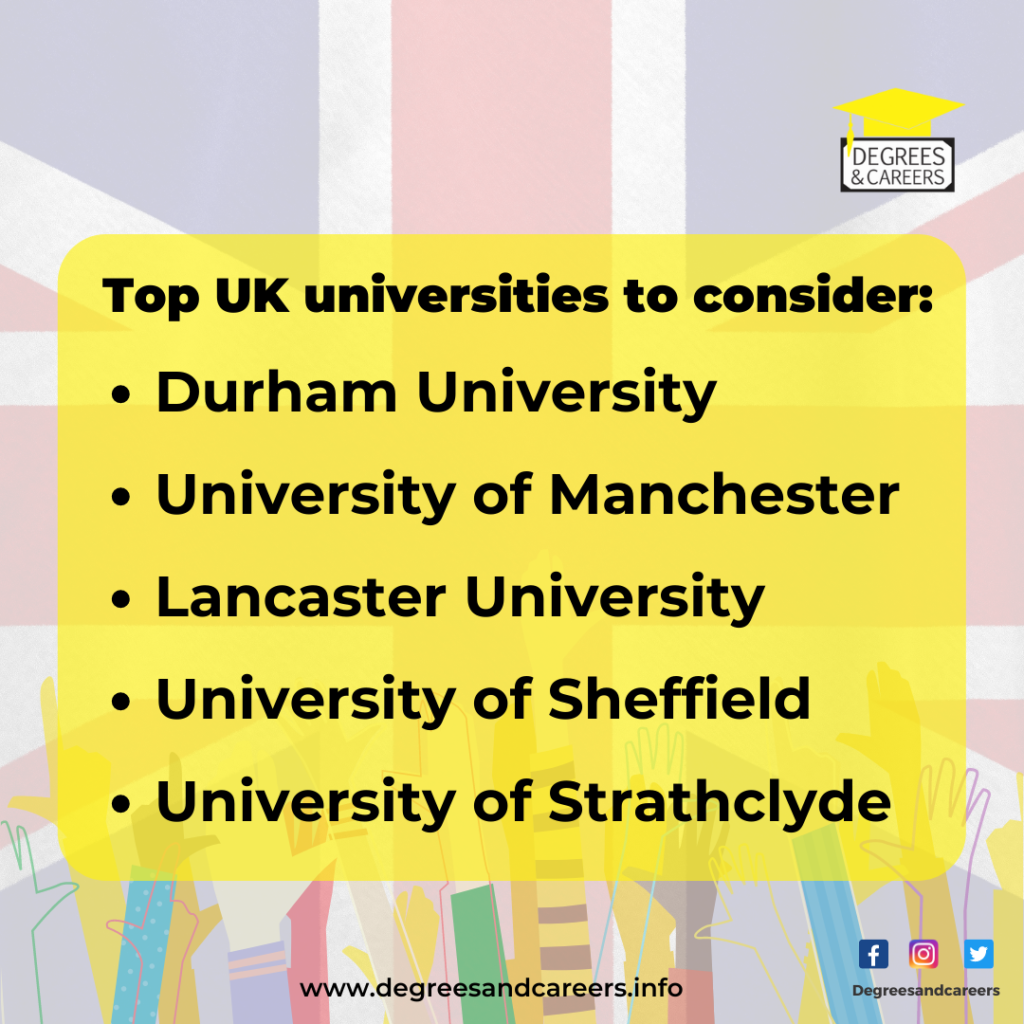
You may have heard the term "school district" many times over the years. But what is it? They are a special-purpose district that manages primary and secondary public schools in a specific area. These districts may be run privately or by a board. What makes them unique? The following article will provide more information about special purpose districts. Continue reading to learn more about how your school district works. You will discover that there are many.
They are all independent
In some US states, independent school districts operate as separate entities from any county, municipality, or state. Because they are independent from their parent organizations, they are exempted from the same laws as other school areas. Independent school districts may also be known as charter schools. Regardless of the difference in operating style, they are often considered superior to traditional public school districts. Here's a look at the differences between them.
They are open to all.
Perhaps the term "school" makes you wonder about what a school is or why it exists. Special-purpose districts, also known as school districts, are those created by the states for the purpose of managing public schools. Although there are many differences among public and private schools, one constant is that school districts are part the local government. These districts are run by elected officials and funded by local taxes.

They are governed through a board of education
A board of education is a governing body in a local school district. It is made up of citizen representatives who are elected or appointed to serve as the public's eyes, ears, and mouth on education. School boards are responsible for ensuring that public education is high quality and effective in their local communities. The board faces tough decisions and public scrutiny on a regular basis, but also shares in the success of academic achievement. The work of a school board is often closely monitored by the public. Because its members are close to voters, citizens, and citizens, their opinions are valuable.
They are governed according to a mandate from the state
A state mandate, also known by the "mandate", refers to a state law which specifies the type and responsibility of an education system for certain standards. These mandates can be carried out by the department of education of the state, county offices or school districts. A mandate can be passed down to the school district level, or delegated to an administrator law judge depending on what state it is. While many states have mandates, some do not.
These are funded from local taxes
Local taxes are a source of funding for school districts. The main source of funding for schools is generally property taxes. The amount of taxes a property owner must pay is known as the millage rate. One mill equals 1 dollar of tax. Based on the local property tax basis, the district's millage rates are calculated. The amount that the state and federal governments share is equal to a certain extent. However, this number may not be uniform for every district.
They have the power of making rules and regulations
A school district, a quasi-municipal entity created by the state legislature to oversee public schools, is called a school district. School districts are responsible for setting the rules that govern the operation and administration of a school system. Typically, school districts are organized in such a way as to minimize centralized administration, but in some cases, school districts can exercise broader powers. These powers include the ability to make rules and regulations as well as to decide what school activities are acceptable.

They are subjected to public scrutiny
Information about district needs could be included by the District in a newsletter or other community publication. Staff and students could be informed of community meetings about a ballot issue. Some school districts have their own calendar. Information about ballot measures may be posted by some districts on their website. However, this information may not be as easy to find as they would like. This transparency is crucial for public education. The district can still be subject to criticism from the public. The district may limit the distribution and use of political materials in public vehicles, for instance.
FAQ
How do you apply to college?
There are many different ways to apply to college. Reach out to your high school guidance counselor, admissions representative or for more information. Online applications are popular among high schools. Contact local colleges for more information. Most colleges accept applications online through their websites.
You can apply by mail, but you will need to complete the application and write a personal essay. Also, send copies of any required documents. You can use the personal statement to tell why you would like to study at this school and what its benefits are to you. The personal statement helps you to communicate your motivations and goals to the admissions committee.
You can find sample essays that you can download from our website.
What is the difference between a college and a university
A university is an institution that offers higher education. It offers courses in various areas, both undergraduate and postgraduate.
A college is usually smaller than a university and has a lower reputation. While it may offer fewer programs, many colleges have their own specialist departments.
How long should you spend on college preparation?
How much time you have available to study and how long it takes to prepare for college will determine the amount of time you spend on preparation. Start taking college preparation courses as soon as you finish high school if you want to be able to go straight to college. If you are planning to leave school for a while before you can attend college, it is probably not necessary to start planning.
You should discuss your plans with your parents and teachers. They may suggest certain courses of study. Keep track of all the courses you have taken and the grades you earned. This will enable you to plan for next year.
Who can homeschool?
Anyone can homeschool. There aren't any requirements.
High school graduates are qualified to teach their children. Many parents choose to teach their children as they go to college.
Parents who have less formal education may be able to teach their children.
After meeting certain requirements, parents may become certified teachers. These requirements vary by state.
Some states require homeschooled students take a test to graduate. Others do not.
Parents who wish to homeschool must register their family with the local school district.
This process involves filling out paperwork and submitting it to the school board.
After registering, parents will be able to enroll their child in either public or privately-funded schools.
A few states allow parents to homeschool without registering their children with the government.
If you are a resident of one of these countries, you will have to ensure your children adhere to the state's compulsory attendance requirements.
What does it take to be a teacher early childhood?
First you need to decide if your career path is in early childhood education. If so, then you will need to get your bachelor's degree. In some states, students must have a masters degree.
You will also likely need to attend classes during the summer months. These courses cover topics such as pedagogy (the art of teaching) and curriculum development.
Many colleges offer associate degrees that lead directly to a teaching certificate.
Some schools offer certificates, while others offer bachelor's and master's degrees. However, some schools only offer diplomas.
You may not require additional training if you are planning to teach at your own home.
How much does homeschooling cost?
There are no set costs for homeschooling. Some families charge between $0-$20 per lesson. Other families offer free services.
Homeschooling takes dedication and commitment. Parents must make time for their children.
They should also have easy access to books, supplies, as well as other learning tools. Many homeschoolers have to make use of community programs and events in order to enhance their curriculum.
Parents must think about the cost of transport, tutoring, and other extracurricular activities.
In addition, homeschoolers must plan ahead for field trips, vacations, and special occasions.
Statistics
- And, within ten years of graduation, 44.1 percent of 1993 humanities graduates had written to public officials, compared to 30.1 percent of STEM majors. (bostonreview.net)
- In most developed countries, a high proportion of the population (up to 50%) now enters higher education at some time in their lives. (en.wikipedia.org)
- They are more likely to graduate high school (25%) and finish college (116%). (habitatbroward.org)
- Think of the rhetorical power of nineteenth-century abolitionist Harriet Beecher Stowe, Martin Luther King, Jr., or Occupy Wall Street activists with their rallying cry of “we are the 99 percent.” (bostonreview.net)
- These institutions can vary according to different contexts.[83] (en.wikipedia.org)
External Links
How To
What is vocational training?
Vocational education prepares students for the workforce after high school. Students are trained in specific skills to be able to do a particular job such as welding. Vocational Education also offers apprenticeship programs that provide on-the-job training. Vocational education stands out from general education. This is because it focuses less on general knowledge and more on developing skills for specific occupations. The goal of vocational education is not necessary to prepare people for university study but to help them find jobs upon graduation.
Vocational education may be provided at all levels of schooling, including primary schools, secondary schools, colleges, universities, technical institutes, trade schools, community colleges, junior colleges, and four-year institutions. You can also find specialized schools such a culinary arts school, nursing school, law school, medical schools or dental schools. Many of these offer both academic instruction, and practical experience.
A number of countries have made significant investments in vocational education over recent decades; for example, Australia, Denmark, Finland, Germany, Ireland, Japan, Luxembourg, New Zealand, Norway, Poland, Sweden, Switzerland, the United Kingdom, and the United States. The effectiveness of vocational training is still a controversial topic. Some critics say it does not improve students' employability. Other argue that it prepares them well for life beyond school.
The U.S. Bureau of Labor Statistics has estimated that 47% of American adults hold a postsecondary certificate or degree related to their current occupation. This figure is higher for those with more education. 71% (25-29) of Americans have a bachelor's level or higher and work in fields that require a postsecondary degree.
The BLS reported in 2012 that almost half of all adults had some type of postsecondary credential. A third of Americans have a two-year associate's degree and 10% hold a four year bachelor's degree. One fifth of Americans had a masters degree or doctorate.
The median annual wage for individuals with a bachelor's in 2013 was $50,000. This was compared to $23,800 when they had no degree. For those with advanced degrees, the median wage was $81,300.
For those who did not complete high school, the median wage was only $15,200. The median annual income for those with less than a high-school diploma was $13,000